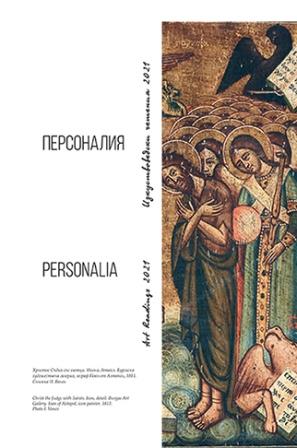Един сред многото
One Amongst Many
Author(s): Elissaveta MoussakovaSubject(s): History, Fine Arts / Performing Arts, Middle Ages, History of Art
Published by: Институт за изследване на изкуствата, Българска академия на науките
Summary/Abstract: Numerous medieval manuscripts were copied by teams of scribes. As little as we know about the organization of manuscript copying in medieval Bulgaria and the relations between commissioners and doers, we know even less about the personalities of the scribes. Is it worth it then discussing on the subject since, to quote Richard Gameson, ‘collectivity and self-effacing humility and obedience were (or should have been) the norm for the monastics who undoubtedly comprised the vast majority of scribes in our period’? In his view it is the modern thinking that is susceptible to “human interest” and tends to admire individuality. Following his argument, Corinne Dale makes an apt distinction between scribe’s individuality and the human being behind a book by pointing out that if the scribes were not concerned with communicating their individuality, numerous colophons testify that their human labour and dedication was something they were keen to purvey to their readers. While such an understanding of medieval scribes’ ethics and limits in which they are supposed to speak about themselves must be a pre-condition of any modern investigation on medieval scribe’s “self”, a particular manner or writing and leaving a name on the book offered to God puts nevertheless an individual imprint on it. In practice, more often than not we see collectively copied manuscripts displaying the idiosyncrasy of scribes’ hands. Therefore the question who are these poor servants of the pen who make themselves known and remembered, in what circumstances their act of self-revealing was admissible, becomes even more insistent when addressing a group of collaborators. What we actually know about the medieval notion of working together is not much and it usually refers to distribution of texts or gatherings. As to the nature of a team which could be a settled one or travelling, or convoked if a need arises, the information is often uncertain, much more so for Bulgarian manuscripts of the periods to the late fourteenth century. This paper does not focus on paleographical methods of discerning hands, but tries to gain some insight into the circumstances in which a scribe in a team pronounces himself. Is it a permissible spontaneous self-expression or a gesture sanctioned by a privilege? Is it related to commission-and-payment conditions and does the situation differ from that when a single scribe signs or not a manuscript he has copied? The issue of individuality of scribes in medieval Bulgaria has not been studied nor are there many sources to cast light on it. Therefore, this paper is an attempt to examine some of the disputable points in a selection of Bulgarian manuscripts dated to the thirteenth and fourteenth centuries – the Bologna Psalter, the Theodore Triodion, the Gruban Triodion, the Triodia Sin. slav. 23 and Sin. slav. 24, the Miscellany from the Russian National Library cod. Gil’f. 34, the Dobreisho Four Gospels. Each example represents a different case for which an explanation is offered. The provisory conclusions may be summarized in the following: the appearance of personal names in manuscripts copied by two or more persons is not submitted to written formulae resolutely different from those in manuscripts copied by a sole hand – except those indicating one’s share. Insufficiently explained remains the scribe’s motivation to sign – whether it is of business-like or non-material character. No specifically different context was detected for getting a person out of anonymity in comparison with the occasions when one copyist worked on a book. It comes to say that to understand the mechanism of individualization both situations should be studied in parallel. The impression is that the copyist, participating in fulfillment of a commission, did not feel himself bound by terms of collectivity but could react individually. Finally, the expediency of the offered research, here only outlined, is justified by the expectation that it could contribute to clarify the profile of an organization of the earlier calligraphic schools or copying centres and workshops. Their recognition and reconstruction of their activity is what we try to do, including the evidence about the individual ‘behind the book’. Any further investigation should be done on a larger scale and expanded theoretical grounds.
Journal: Изкуствоведски четения
- Issue Year: 2021
- Issue No: 1
- Page Range: 81-115
- Page Count: 35
- Language: Bulgarian
- Content File-PDF

